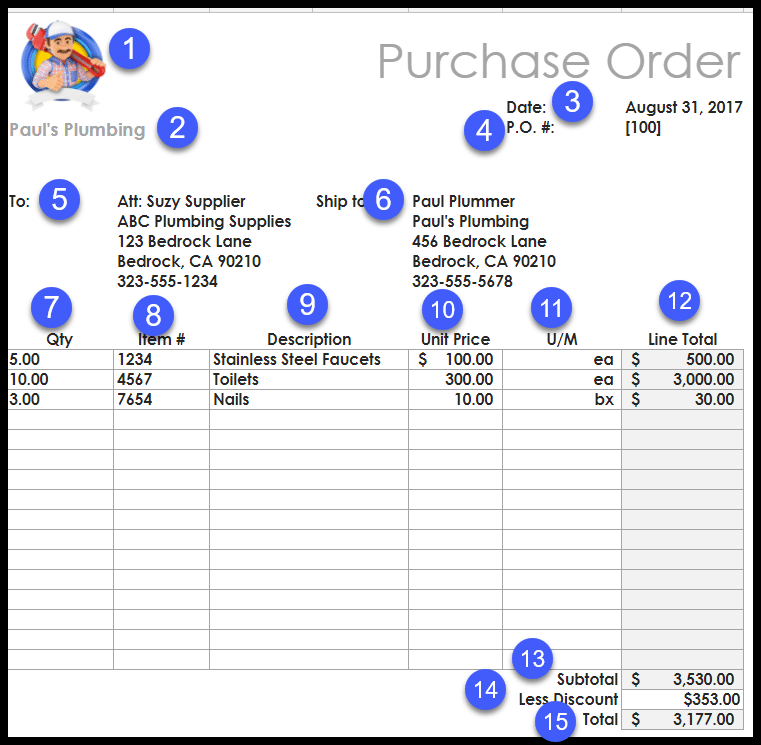Every business has two primary parties, a buyer and a seller, regardless of the industry. A company keeps track of its inventory and sales through the usage of a purchase order and invoice. As these documents are similar in many aspects, there is often confusion.
It is a legal document between a buyer and the seller initiated by the buyer. Whereas, an invoice is a sales document requesting payment for the goods sold.
What does a purchase order contain?
The purchase order is from the buyer to the seller requesting materials at a price fixed by the seller. It contains the following points:
- Issuing date
- Purchase Order Number
- Details of materials
- Shipping Details
- Buyer’s name and Address
- Seller’s name and Address
- Terms and Conditions
A purchase order is created before the sales invoice is sent as it defines the requirements for sale. Having a proper purchase order system will help the management in keeping track of ordered, shipped, and received but not invoiced stock. With modern technologies in place, purchase orders have now become computerized and allow for better payment and inventory tracking.
How does a purchase order work?
The working of the order takes place in three steps:
1. Submission
The buyer pre[ares the order electronically through their purchasing department. It usually includes all the details regarding the order. All the buyer needs to do is to fill the fields for each piece of data in the computer and mail it to the seller.
2. Processing
Once the buyer submits the purchase order, the seller process the order. The orders’ status on the seller’s side remains in-progress until the delivery of the product. Once the shipment physically reaches the buyer’s warehouse, the purchase order is compared with the inventory, and the actual inventory arrives. Then the purchase order is marked as processes and awaiting payment.
3. Completion
Suppliers use these orders for order fulfillment and the payment process. Upon the receipt of the payment and shipping, the seller uses the order to tally their inventory. Often, along with electronic input, the seller also takes a paper copy for a manual check of the shipment. If the order is unpaid, payment reminder dates and deadline along with return date is set.
The buyer uses a purchase order when they wish to buy supplies or inventory on credit. PO also serves as risk protection in case of any dispute. It also has a significant part in inventory and payment tracking. It helps the suppliers to compare the shipped and ordered inventory for the exact status. The suppliers can track the payments that they have received for specific orders. Buyers also hold hard copies of the purchase order to monitor the timely receipt of the goods.



 Start using ZapInventory today
Start using ZapInventory today
